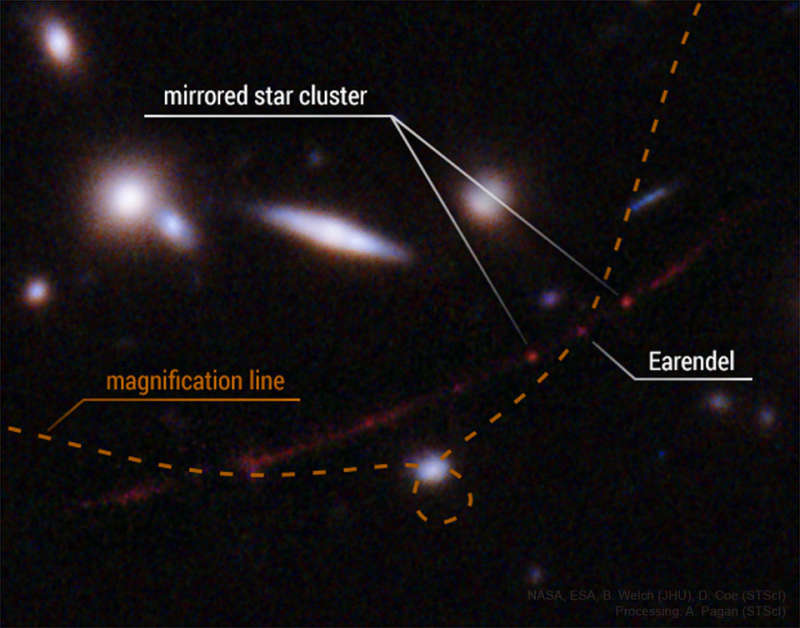
|
Explanation: Is Earendel the farthest star yet discovered? This scientific possibility started when the Hubble Space Telescope observed a huge cluster of galaxies. The gravitational lens effectáof this cluster was seen to magnify and distort a galaxy far in the background. This distorted background galaxy -- so far away it has a redshift of 6.2 -- appears in the featured image as a long red string, while beads on that string are likely to be star clusters.áá The galaxy cluster lens creates a line of maximum magnification line where superposed background objects may appear magnified many thousands of times. On the intersection between the galaxy line and the maximum magnification line is one "bead" which shows evidence of originating from a single bright star in the early universe -- now named Earendel. Future investigations may include more imagingáby Hubble to see how Earendel's brightness varies, and, quite possibly, by the new James Webb Space Telescope when it becomes operational later this year.á Earendel's great distance exceeds that of any known stable star -- although the star that exploded creating GRB 090423 had a redshift of 8.2.
|
January February March April May June July August September October November December |
| ||||||||||||||||||||||||||||||||||||||||||||||||
NASA Web Site Statements, Warnings, and Disclaimers
NASA Official: Jay Norris. Specific rights apply.
A service of: LHEA at NASA / GSFC
& Michigan Tech. U.
Based on Astronomy Picture
Of the Day
Publications with keywords: universe
Publications with words: universe
See also:
- APOD: 2025 November 23 Á The Observable Universe
- APOD: 2024 December 1 Á Cosmic Latte: The Average Color of the Universe
- APOD: 2024 October 20 Á Dark Matter in a Simulated Universe
- APOD: 2024 July 1 Á Time Spiral
- APOD: 2023 December 31 Á Illustris: A Simulation of the Universe
- APOD: 2023 July 5 Á A Map of the Observable Universe
- APOD: 2023 June 29 Á A Message from the Gravitational Universe
